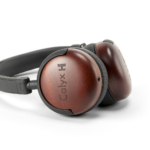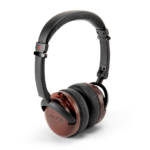Is noise canceling a must when buying new headphones?
Anyone who travels a lot or wants to work concentrated in an open-plan office should listen to noise-canceling headphones more closely.
From the editorial team 2 years ago

In-ears
The advantages of in-ears are their size: They are small, light and, thanks
Noise canceling, also known as noise suppression, actually has every headphone and many manufacturers even specify this external attenuation as a decibel value in their technical data!
Because headphones sit on or in our ears, certain frequency ranges are naturally lowered or suppressed. This is called “passive noise canceling”.
The active noise suppression (you can find an overview of our previously tested noise-canceling headphones here: Our best – noise-canceling headphones ), on the other hand, always needs electricity, since built-in microphones permanently “listen” to the outside world and a built-in chip turns the sound waves 180 degrees rotates in phase. This anti-noise is supposed to extinguish external noises, which unfortunately does not always work reliably with many cheap offers from no-name manufacturers. Unpleasant noise or sometimes drastic sound changes are unfortunately not uncommon.
So if you travel a lot or want to be quiet in noisy surroundings, headphones with active noise canceling are a must.
Some premium manufacturers now offer really clever solutions that go far beyond simple noise filtering. For example, air pressure sensors recognize whether you are sitting in an airplane – the noise canceling then adapts accordingly. Or: If you like, you can set the headphones so that everything except voices, such as announcements in the train or the pilot, is filtered out. So you can always enjoy your peace and quiet, but important sound events can no longer be overheard.
to their design, usually offer a good grip – ideal for sporting activities. They can also be stowed away easily when you don’t need them because they fit in every jacket pocket. Due to their design, in-ears are inserted directly into the ear canal or, as with so-called ear-buds (for example, as with Apple’s white EarPods ) directly in front of it. This means that the energy consumption is very low and the built-in membranes only need to be moved a little to achieve acceptable volume levels.
The sound source is therefore located very close to the eardrum, it sounds very direct and close, but it also harbors the risk of hearing damage and excessive isolation from outside noise, which can be life-threatening , especially in traffic .
Over-ears & on-ears
Over-ears, i.e. headphones with circumaural, but also their smaller brothers, the on-ears with supra-aural shells, have the advantage that larger drivers can be installed and thus the tonal range – especially in terms of naturalness – is greater. Due to these designs, the air in front of the ears and the auricles above all influence the sound. This is therefore spatially differentiated and especially classical or jazz recordings create a broad stage in the head on which we can precisely assign the individual instruments. It can therefore be said that listening with large headphones is more like our natural hearing.
For some, the size and weight may certainly be a disadvantage, but the contact pressure is also a factor that should not be underestimated: If the headphones are too tight, an uncomfortable feeling of pressure arises that can be painful.
In general, however, one cannot say that one design is sonically superior to the other. Both in-ears and over-ears have excellent representatives of these genres in terms of sound.




The Calyx H has ear cushions made of synthetic leather, which should be more robust and softer than natural leather and, in combination with the variable headband, should enable long-term comfort.
At the same time, value was consciously placed on an elegant, compact design with wooden elements that explicitly aims to address women as well.
Technical data (manufacturer information):
- Impedance: 50 Ω
- Frequency response: 20 Hz – 20 kHz
- Driver diameter: 40 mm
- Weight: 189 g
Further information at: www.audiodomain.de

![]()
by editorial staff
Facebook
Twitter
Latest Guide
- What are the pros and cons of in-ear and over-ear headphones?
- Is noise canceling a must when buying new headphones?
- Where is the headphone trend heading?
- Apple AirPods Max
- Editor’s tip: Recommended headphones for Christmas
- Comparison test: True Wireless In-Ears
[hfe_template id=’3333′]
